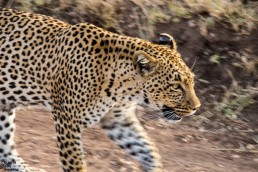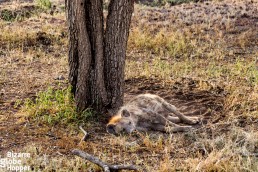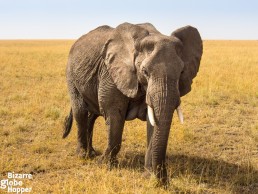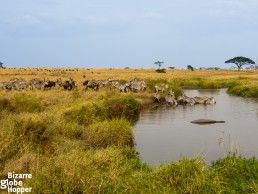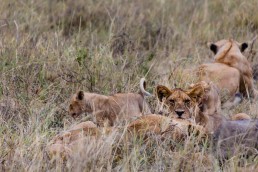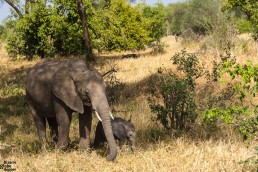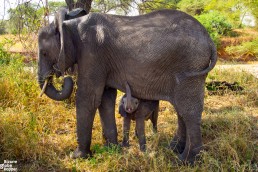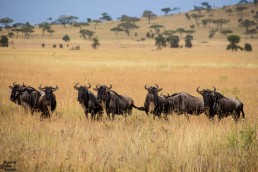Finding the best wildlife sightings in the vast plains of Serengeti can be tricky even for the experienced guides. Learn when and where to see the famous Serengeti lions and other predators, where to find the great migration during and after the peak season, and how to avoid the crowds. Make your safari in Serengeti truly once-in-a-lifetime experience with our wildlife spotting tips!
Serengeti National Park encapsulates the African safari experience. More than a million wildebeest roam through the endless plains each year following the magical beat of nature while the whole Big Five runs close. Read on to get the box seat from this ultimate wildlife theater instead of fighting for the best sightings with the masses!
How Big is Serengeti National Park and Why Does It Matter?
Serengeti’s merits are impressive: it’s listed as a UNESCO World Heritage Site and the 7th wonder of the world.
Serengeti is hands down the most popular national park in Tanzania and constantly stays in the top 5 most visited parks in Africa.
The hype means that more than 300 000 visitors share the wildlife sightings each year. During the high-season, Serengeti gets crowded. That said, its boundaries are vast.
Serengeti National Park is six times bigger than Kenya’s Masai Mara and easily larger than some European countries. The name comes from Maasai word “siringet” meaning “the place where the land runs on forever”. Luckily, Serengeti is big enough to avoid crowds if you are willing to step aside from the beaten path.
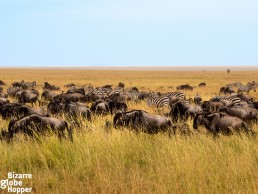
Great Migration Marks the Peak Season in Serengeti and Masai Mara
Serengeti is famous for the great migration, an incredible show where 1,3 million wildebeests together with 200 000 zebras and gazelles drum over the endless plains in the search of fresh grass. The sheer number of hooves makes it a play of survival where everyone tries to avoid getting stamped or captured by ravenous predators. Serengeti’s great migration is the largest mammal migration system in the world – and one of the last intact migration systems altogether.
The most iconic – and photographed – moment is when the disorganized pack of hooves crosses the Mara River teeming with enormous Nile crocodiles. If you urge to see that, the choices run short: head to Kogatende area in the northern Serengeti. Typically the best timing is from late-July to mid-October, but as the last years have shown, nature is unpredictable.
Be prepared to take part in the human migration during August and September, when also prices are at their peak. Choose your tour operator wisely and prefer private camps. A good guide can save you from the biggest crowds.
The Best Timing for Leopard, Cheetah, and Lion Sightings in Serengeti National Park
Whereas the great migration is seasonal, you can spot the world-famous Serengeti lions all year round. Watching lions feasting on a hard-earned kill is a sight to remember.
The best timing to see predators in action in Serengeti runs from February to March since that is the prime calving season for hoofed animals. The big cats follow the migration: during February and March they roam in the plains below Ngorongoro Crater. Read this article to learn why you should visit Serengeti in March.
How to Follow the Great Migration in Serengeti During the Peak and Off-Season
At the time of the great river crossings, Serengeti overflows with tourists. The good news is that the migration is on the move inside the boundaries of Serengeti year-round.
The location of the great migration cannot be firmly stated, although there are predictions. But don’t count totally on those detailed online maps when you make the bookings, because the schedule has been varying during the last years. Your best bet is a good tour operator who is willing to drive as far as needed to track down the migration and even change accommodation bookings on the fly if needed.
Where to Find Serengeti’s Great Migration in January, February, and March
From January to March the wildebeests are calving in the volcanic plains below Ngorongoro Crater, which offer the most nutritious grass for pregnant gnus and newborn calves. It’s the timing that you can usually count on since those fertile plains are the favorite spot for hooves – only rains can chase them away. Approximately 400 000 wildebeest babies are born between January and mid-March making it an exciting time to visit.
Where to Find Serengeti’s Great Migration in April, May, and June
Towards the end of March, the long rains begin, meaning regular showers until the end of May. Some roads become impassable, and the long grass disturbs wildlife sightings in Serengeti. In April, the migrating hooves split: some continue their journey west almost all the way to Lake Victoria while others turn already north through Seronera.
During June, the wildebeest herds can usually be found near Grumeti River in the western horn of the park.
The Peak Season: Serengeti’s Great Migration Reaches Mara River in July
By early July the first hordes of zebras reach the northern Serengeti, to be followed by wildebeests during the rest of the month. If there are enough grass and water, the migration spreads all the way from Seronera to Mara River.
During dry years wildebeests congregate near the river earlier. The migration stays typically in the northern Serengeti and Masai Mara until mid-October or November when the harsh rains chase the animals southwards once again.
Go Off-Season or Off-the-Beaten-Path
Safari in Serengeti should be “the trip of a lifetime” during which you can see more wildlife than anywhere else in the world.
Plan your safari carefully to tune your visit in Serengeti into a private nature document instead of following a line of other jeeps to the great kills. Whereas in South Africa, for example, you can visit private reserves of the Greater Kruger National Park (such as amazing Balule Nature Reserve) instead of Kruger National Park to beat the crowds, in Serengeti you must be more clever.
I would recommend visiting Serengeti during shoulder season to avoid to masses – unless you definitely want to witness the great river crossings. Since Serengeti National Park is huge, you can find private corners also during peak season, if your safari company is willing to drive off-the-beaten-path and you have enough time for the detours.
We really enjoyed our visit to Serengeti in mid-March and didn’t encounter any rainy days. It’s a beautiful time to visit since the plains are full of baby animals, and short grass allows good sightings. The calving season guarantees that lions, hyenas, and even cheetahs are easy to spot. If you need any assistance in planning a safari in Serengeti, please don’t hesitate to contact us!
*Disclaimer: Ombeni African Safaris hosted us on a 10-day safari through Serengeti and other national parks of Tanzania but all the views presented here remain our own.
Read More African Adventures:
Pin this story!
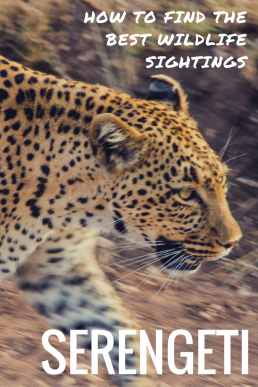
You May Also Like to Read:
Visit Serengeti in March for Baby Animals and Predators in Action
Serengeti is one of the best places on earth to witness the ancient drama of prey and predator. In March, the migrating wildebeests make the big cats reckless.
Tarangire National Park – the Best Place to See the African Elephants?
Tarangire National Park in Tanzania is often said to be the best place to see the African elephants and it certainly lives up to its reputation.
How to Plan the Best Safari in Tanzania
How to plan the best safari itinerary in Tanzania? What are the pros and cons of the high and low season? Check our safari planning tips before you go!
How to Choose a Safari Company in Tanzania: A Comprehensive Checklist
Safari in Tanzania should be the trip of a lifetime. Choose your safari company wisely to get the best out of the gorgeous national parks!


